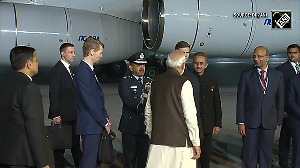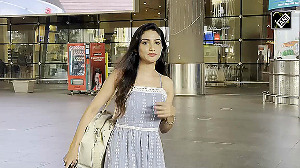As Tata Steel grapples with weakening demand and lower realisations in international operations, which now account for more than 70 per cent of all tonnage, Group Chief Financial Officer Koushik Chatterjee talks to Ishita Ayan Dutt on the way forward
How is Tata Steel responding to the financial crisis?
We have responded at a tremendous pace to our European operations. In Europe and the US, the demand has been very severely affected. India hasn't (been hit) to that extent. The response is different in different places. But the overall plan is to cut cost, enhance productivity and see how to use the environment to respond to the crisis. Fundamental to all this is (our) focus on maintaining liquidity.
What is the liquidity position?
We have $1.8 billion in cash and undrawn lines.
Given that raw material prices have dropped significantly, where do you see margins for the next year?
The group is different in terms of configuration. In India, we have 100 per cent captive iron ore and 60-70 per cent coking coal, a very different business model compared with 100 per cent purchased iron ore and coal in Europe. We have been looking at the cost-price equation in Europe. In a converter model, the increase in cost has typically been passed on to the consumer; that has been the trend for a couple of years.
So, when iron ore prices have come down, one has to see the spread. But steel prices have come down ahead of iron ore or coal prices. The re-balancing effect has already happened. If at all, there should be positive momentum for steel producers.
So, which expansion projects are on track?
The 10 million tonne expansion at Jamshedpur is on track. For Orissa, we keep reviewing it as the ground situation improves and changes. Small construction/fabrication work started some time back. Certainty, timelines for a greenfield project and for brownfield expansion are different. In brownfield, the execution risk is the only issue, which, having done so many brownfield projects, is minimal for us. Greenfield has many more angles.
By many more angles, do you mean managing the environment?
No, how you execute it is very important. Getting into a new site and working on something as complex as building a three million tonne unit is very different from expanding on an existing site.
On managing the environment, you have faced problems at Kalinganagar, with the titanium project and even at Singur. Is it a group issue?
In India, mega projects in any sector face initial hurdles. That's a reality for all companies or sectors. We need to have the tenacity and perseverance, which we have.
When you acquired Corus, steel prices were at near-peak levels. Was that the right time to buy?
When you take long-term strategic decisions, there is a tactical part and a strategic part. Execution of that is tactical, and the strategic fit has to survive in all weathers. Six months back, somebody would say it was a fantastic buy; now people ask, is this a right buy? That's not how strategic decisions are made. That's not how organisations focus on growth.
The bottom line is that this is a very important part of our overall growth focus and globalisation and therefore we took the decision. We have got to make it work. The way forward is that we will be in a better position in the future and focus a lot on fundamental/structural issues, whether it be raw material, restructuring or organic growth. All of that is tactics.
One needs to take it in that context rather than keep questioning a decision. And the execution of that was done in the best possible manner. You will have situations or time during the integration where you will be tested and it is only the confidence and the belief that you have that will help you achieve the target.





